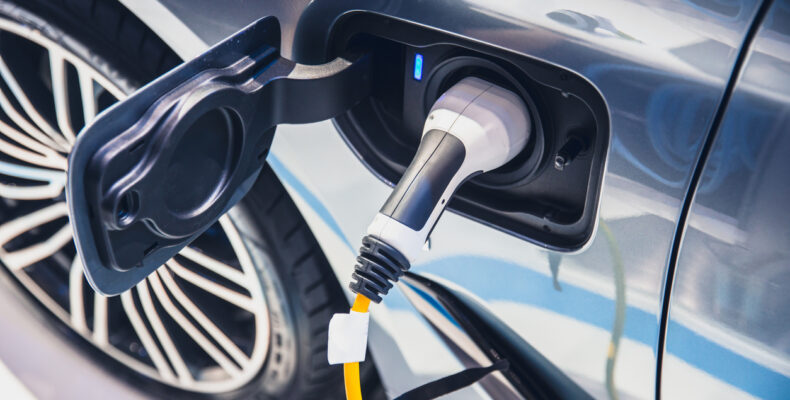
The current state of the EV industry
After a rocky start with several silicon valley busts, it is safe to say that Electric Vehicles (EVs) are here to stay. Their global market share has exploded in recent years, increasing from 0.01% 2010 to 8.6% in 2022 which amounts to increases by more than a factor of 800 in just 12 years. However, the fundamental issues that plagued EVs in the early years have largely remained unchanged. The big question, therefore, is will these issues catch up with the market?
The major problem with EVs is the battery itself. Production requires large quantities of rare metals, primarily lithium. Demand for lithium is soaring, with the price of the raw material doubling between 2016 and 2018. Lithium is a finite resource, and extraction of the rare metal causes soil, water and air contamination. EVs also typically require copper, cobalt, aluminium, nickel and manganese. The emissions resulting from mining and processing these metals on top of manufacturing the car itself means that producing an electric car releases around twice as much carbon dioxide than the production of a petrol powered one.
Once EVs are manufactured, the next problem is the power source used to charge them. If an electric car is charged using energy generated from a coal-fired power station, the amount of CO2 produced per kWh increases by approximately a factor of 20 compared to renewable sources (when considering their manufacturing emissions). If people charge their car via the national grid, they won’t have a choice as to how green the electricity is either. Maintenance and longevity are also concerns. Although the battery can be expected to maintain 80-90% capacity even after 200 000 miles, replacing the battery is costly. Replacing a Tesla battery outside its warranty period typically costs around US$10, 000 – $20, 000.
In light of these problems, the automotive sector has two directions it can go in: depart from lithium-based battery technology (or battery technology altogether) or double down on it. Over the years, several technologies have been presented as alternatives to electric power for cars, including hydrogen power, biofuel and even nuclear power. All of these technologies have their own distinct pros and cons.
Hydrogen power has been seriously considered for many years. Hydrogen fuel cells generate electricity by electrochemically converting hydrogen gas and oxygen into water, with water vapour and heat being the only by-products of the reaction. The two main problems with hydrogen power are fuel storage and the costs involved with hydrogen extraction and fuel cell construction. To practically store hydrogen in the limited space afforded by a family sized electric car, it needs to be kept at extremely high pressures. Having a tank of highly compressed flammable gas in a vehicle also raises serious safety concerns. A key difference in the costs associated with manufacturing hydrogen powered vehicles is in the construction of the fuel cell. The raw materials are relatively inexpensive, but the manufacturing process is costly. The cost of this process needs to come down for hydrogen powered vehicles to compete with EVs. Refuelling infrastructure for hydrogen power is also decades behind electric charging point networks in terms of investment.
Biodiesel is a renewable, biodegradable fuel constructed from vegetable oils or animal fats. Biofuel is, in principle, carbon neutral because the carbon produced when burning biofuel will be absorbed again when the plants regrow. This does not, however, take into account energy inputs (typically fossil fuel derived) required to grow, harvest and process the crops used. Furthermore, allocating land to growing matter used in biofuels takes away land that could have been used for food production and carbon storage. Around 75% of the world’s arable land is already being used for food production, and with a growing population this is percentage is predicted to further increase. Furthermore, Biofuel crops take up a large amount of land for a relatively small amount of energy, to the point where trying to make biofuel cars the norm across the world would result in a disastrous global food shortage.
In light of these considerations, experts predict that lithium powered EVs are here to stay. Their cost has dramatically reduced over the last few decades, a factor of 30 times cheaper than the 1990s, whilst their energy density and reliability has improved year on year. Recycling of batteries is also a consideration. The balance is slowly shifting in terms of which metals found in EV batteries are cheaper to recycle than mine, as research into battery recycling gains momentum. China has already implemented policies to incentivise the use of recycled materials in battery manufacturing. Similar to the other factors relating to charging networks and battery technology, the scaling up of the battery recycling industry will be crucial to the further dominance of the EV industry compared to competing green technologies.
Barker Brettell has a dedicated Automotive Sector group that can help protect and develop an IP strategy for your automotive innovation, whether that is EV, hydrogen, or biofuel. If you would like to continue the conversation, please contact the author, or your usual Barker Brettell attorney.



